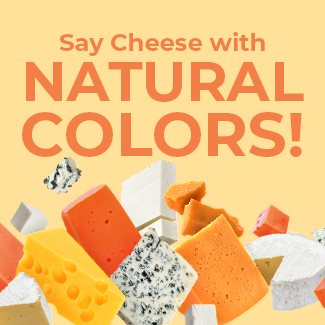Natural Color for Plant-Based Cheeses and Butters
The Plant-Based Food Market is Surging
The plant-based movement is making an undeniable splash in the food industry, with market value soaring to $5 billion (Plant Based Food Association 2019). Supporting the growth is consumers’ openness to incorporating more plant-based products into their diets, with almost a third of the consumer demographic now identifying as a flexitarian (Nielsen 2018). Brands are racing to launch more plant-based product offerings to meet growing consumer interest.
Dairy-free cheese substitutes present a delicious opportunity for product developers, as the now-$92 million category is up 23.5% from prior year (IRI 2020).
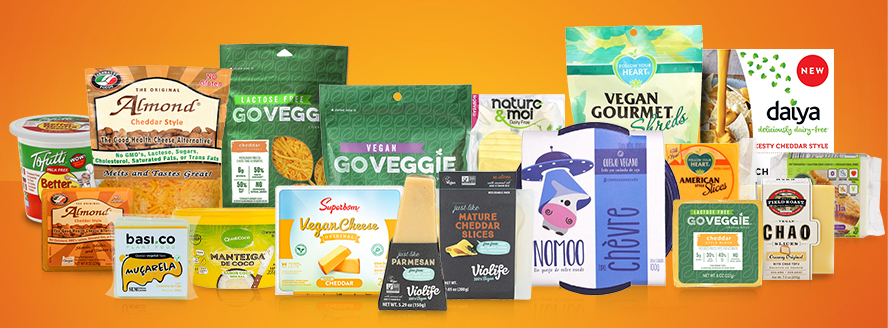
Not only are packaged cheese alternatives a bright spot for product innovation, but also food service plant-based cheeses. Menu penetration of “vegan” on US menus has grown 490% since 2008, appearing on over 11% of menus (Datassential 2018). Although plant-based meat substitutes remain top priority, what’s a plant-based burger without plant-based cheese?
Say Cheese for Plant-Based Options
There is endless opportunity for plant-based cheese, from refrigerated slices, snack cubes, cream cheese, spreads, and deli dips to shelf-stable options like dips, sauces, sauce mixes, etc. Last year, with double digit growth, the non-dairy cheese category outperformed the low single digit growth of traditional dairy cheese.

Natural Color Solutions for Plant-Based Cheese Applications
The majority of plant-based cheese consumers also consume traditional cheese, reinforcing the importance of delivering a true-to-dairy experience (Kerry 2020)—starting with visual appeal through attractive cheese shades.
Natural colors are the obvious choice for plant-based cheeses and add great value to the unappealing and inconsistent shades of plant-based cheeses as a result of the inherent base shades of alternative dairy sources. When approaching color in cheese substitutes, there are a handful of technical considerations to keep in mind:
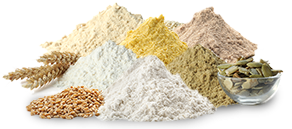
BASE SHADE
Plant and seed flours and oils are common substitutes for milk proteins and unlike dairy milk, they often impart a beige or tan hue. Depending on the starting color of the base, we can provide highly concentrated colors or tailored blends to help achieve a familiar color. Color experts are able to account for the beginning base color when creating color solutions for new products or to match existing products on the market.

PACKAGING
Turmeric, an attractive, bright natural yellow color may be an obvious option for cheese developers, but beware, shades from turmeric will fade under store light conditions in clear packaging. However, it is a great option for plant-based cheese products with opaque packaging. Other options include natural sources like beta-carotene and annatto that provide beautiful yellow cheese shades.
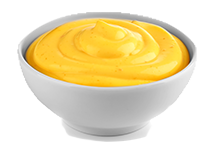
PROCESSING
PARAMETERS
Stability under the harsh heating and mixing conditions that are typically used in dairy manufacturing can be a challenge for natural colors. For example, some paprika oleoresins can shift in shade under harsh processing conditions, so process-specific advice from color experts can help avoid these pitfalls. Natural colors that have been formulated specifically for use with high heat and harsh processing can also be a solution here, such as naturally heat-stable turmeric or Sensient’s optimized heat-stable beet technology SupraRed™.

PLANT-BASED
INGREDIENT LABELING
As we have already mentioned, the base shade can greatly influence the color of the final product. For efficient clean label whitening, botanically-based solutions like Avalanche™ offer label-friendly advantages to ingredient statements.
Oil-soluble and water-soluble natural color options are available for non-dairy cheese applications. The best type will depend on your specific application’s formulation.
For Cheddar, Gouda, Colby, and other traditional yellowish-orange cheeses, natural colors like annatto, beta-carotene, and turmeric are ideal solutions. Through Sensient’s vertically integrated global agronomy program, we have made great strides in cost-improvements for annatto-based solutions, especially with our Peru acquisition just a few years ago.
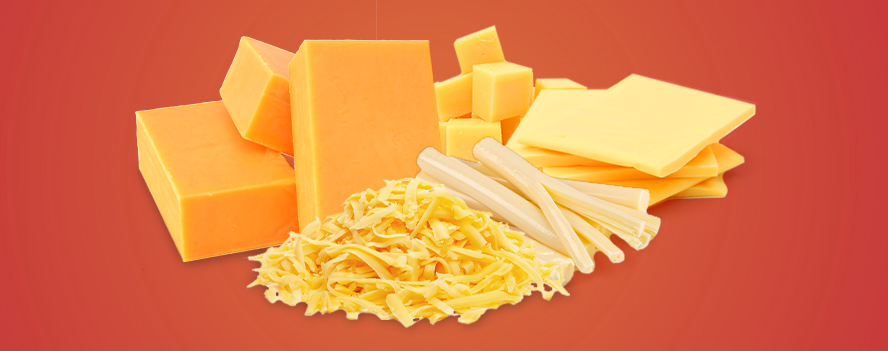
Developers bringing white cheese flavors like Mozzarella or Queso Blanco to life in a plant-based product can achieve bright whites using titanium dioxide or more label-friendly alternatives like Sensient’s Avalanche™ portfolio.
The abundance of flavor opportunity in cream cheese alternatives opens the door to mother nature’s full rainbow, but one major attribute to keep in mind here is heat stability. Check out some of Sensient’s heat-stable flavor and color profiles for plant-based spreads and cream cheeses:

Blueberry
Natural Blue Portfolio

Honey Walnut
Beta Carotene
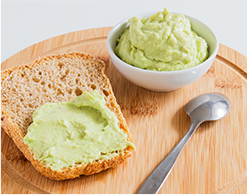
Avocado
Blends using Natural Blue Portfolio

Strawberry
SupraRed™

Pumpkin Spice
Annatto

Sweet Lemon
Turmeric
Sensient’s agronomists are constantly working to increase color concentration and optimize our color crops to enable lower usage rates for developers, so color usage doesn’t impact the texture and taste experience in plant-based cheese products.

“I Can’t Believe”… We Almost Skipped Plant-Based Butter
While cheese alternatives are a clear opportunity for brands looking to widen their plant-based exposure, plant-based butter is actually an even larger category, just shy of $200 million (PBFA 2019).
Formulating with natural food colors in plant-based butter is very similar to plant-based cheese. Because butter is an emulsion, we can help you optimize a water-in-oil formula like AET™ Cheezem or an oil-based Microfine™ dispersion to create an easily scalable solution.

If you’re ready to start formulating with high-performing, cost-effective natural color solution in your plant-based cheese, cream cheese, or butter formulation, request a sample of your desired hue.
If you have questions about anything in the blog, my team and I always love talking color—begin the conversation by scheduling a consultation!







